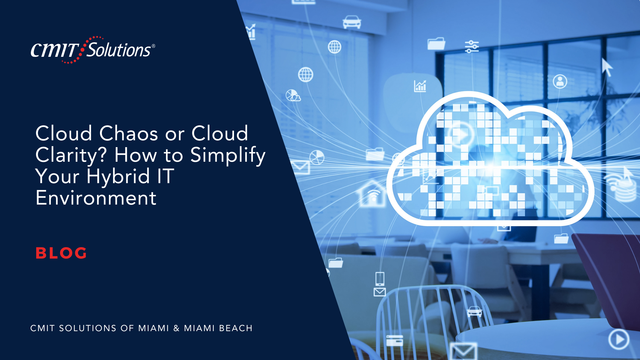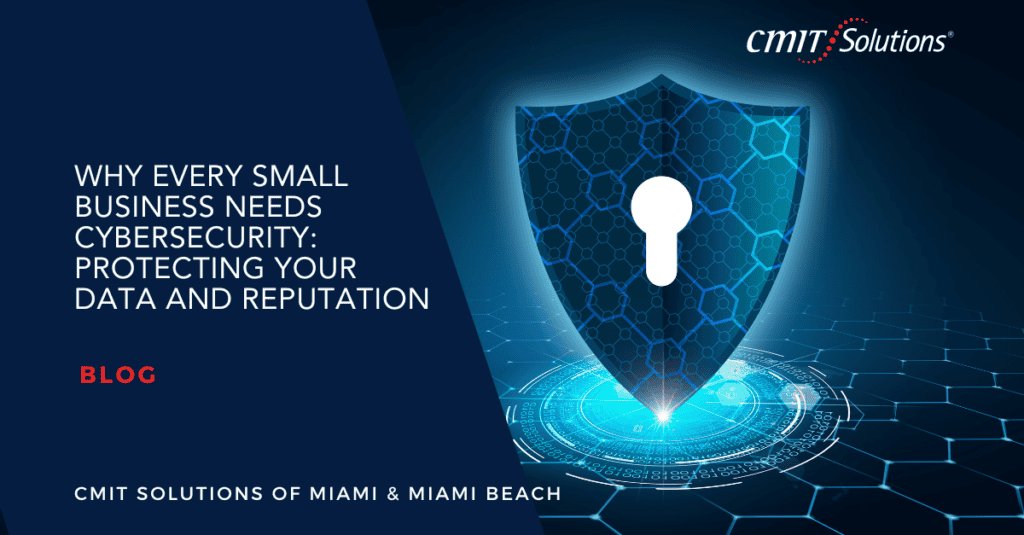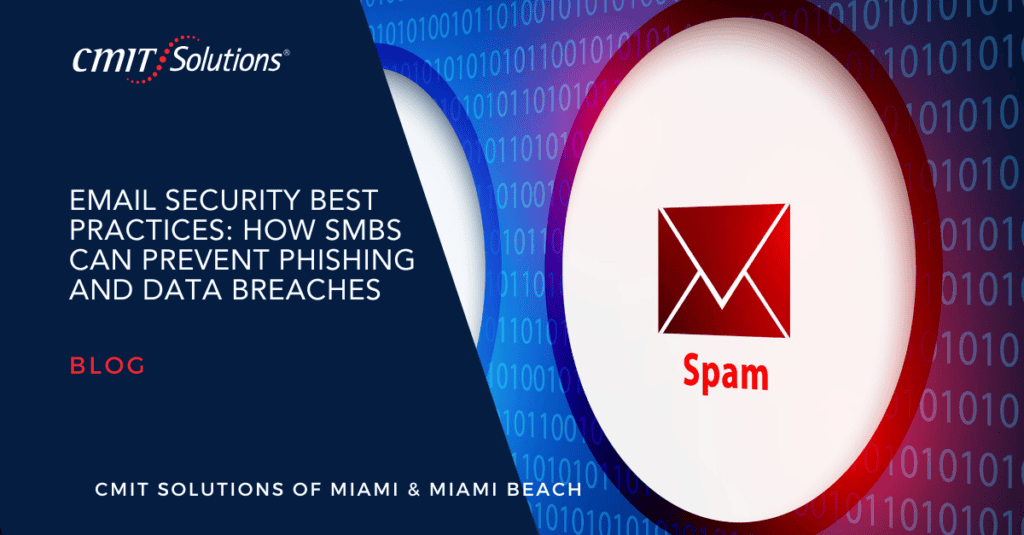Introduction: The Age of Hybrid IT
In today’s fast-paced digital economy, most businesses find themselves operating in a hybrid IT environment—a mix of on-premises infrastructure, cloud services, and software-as-a-service (SaaS) platforms. While this approach allows for greater flexibility and scalability, it often leads to complexity, fragmentation, and security concerns. Businesses in Miami and Miami Beach, where industries range from tourism to tech, face a particularly pressing need to unify and streamline their IT resources.
A well-orchestrated hybrid IT strategy can empower small and mid-sized businesses to scale smartly while protecting their data and boosting productivity. But without the right guidance, what begins as a strategic IT investment can easily descend into chaos.
What Is Hybrid IT?
Hybrid IT refers to the intentional combination of different computing environments—typically public cloud services, private cloud infrastructure, and on-premises servers—to achieve greater agility, scalability, and cost-efficiency. Unlike traditional IT systems that rely heavily on localized hardware or fully outsourced models that live entirely in the cloud, hybrid IT blends the best of both worlds. It gives businesses the flexibility to run workloads in the most appropriate environment, based on security needs, performance demands, compliance mandates, or cost considerations.
For example, a business may host its customer-facing application on a public cloud platform to ensure scalability and availability, while maintaining its customer database on a private server to meet compliance standards. Additionally, hybrid IT setups often incorporate SaaS applications for functions like email, file sharing, and collaboration, which can further diversify the IT footprint. This model helps businesses avoid vendor lock-in, enables incremental upgrades, and supports the modern need for remote access and mobile compatibility. However, managing this blend without a comprehensive strategy can create more problems than it solves—making it essential to define hybrid IT not just by its structure but by the level of governance it requires.
Hybrid IT: The Evolution That Demands Strategic Management
Hybrid IT isn’t a fleeting trend. It is the infrastructure reality for businesses transitioning from legacy systems to modern, agile digital ecosystems. Local businesses that once depended solely on internal servers now operate across a patchwork of public cloud, private cloud, and on-premise solutions. This evolution creates opportunities, but it also invites complications in terms of integration, visibility, and security. Cloud-enabled scalability makes hybrid IT a necessity for growth-oriented firms.
What makes this shift especially challenging for SMBs in South Florida is the rapid pace of technological change. Businesses need to evaluate how each system interacts, whether data flows efficiently between tools, and how users experience those transitions. The need for interoperability, strong APIs, and integrative oversight becomes vital as hybrid environments evolve from reactive to proactive operations. Without cohesive governance, IT leaders risk deploying patchwork solutions that don’t communicate effectively, ultimately creating silos that hinder agility. Achieving strategic management means implementing clear policies, centralized monitoring tools, and responsive support structures to guide infrastructure decisions over the long term.
When Flexibility Breeds Complexity
Flexibility is the main appeal of hybrid IT, yet that same flexibility often leads to disjointed workflows and operational inefficiencies. Teams must navigate siloed apps, redundant systems, and manually reconciled data. Prolonged downtime due to misaligned systems can directly impact service delivery and customer satisfaction. This is especially true for SMBs lacking a full-time IT department.
When business units deploy their own cloud-based tools without central oversight, known as “shadow IT,” confusion follows. IT departments are left scrambling to support tools they didn’t choose or vet. Moreover, simple tasks like onboarding new employees or updating permissions become more difficult across fragmented platforms, leading to increased risk and administrative overhead. As the number of tools and integrations grow, so does the challenge of keeping them aligned with evolving business needs. To minimize complexity, businesses must prioritize consolidation, automate repetitive tasks, and integrate platforms with real-time data sharing capabilities.
Security at a Crossroads: Managing Expanded Threat Surfaces
Each cloud platform, endpoint, and application adds a new layer of risk. Cloud sprawl, poorly managed permissions, and unpatched software increase the likelihood of breaches. Endpoint detection and response (EDR) and unified monitoring are essential tools to mitigate these risks. The more complex the environment, the more critical it becomes to have centralized visibility and control.
Today’s cyberattacks aren’t confined to one point of failure. A phishing email can breach an endpoint, trigger malware, and spread laterally across a hybrid system in minutes. Without consolidated threat detection and real-time alerts, organizations remain vulnerable. Furthermore, access control across hybrid systems must be robust enough to distinguish between legitimate users and malicious actors using stolen credentials. Multi-factor authentication, identity governance, and secure device access must be part of any hybrid IT strategy. Businesses also benefit from consistent employee training, penetration testing, and vulnerability scanning—making security not just a technological measure, but an embedded culture.
Compliance and Regulatory Pressure in the Digital Era
For industries dealing with health records, financial data, or personal information, hybrid IT setups introduce serious compliance risks. Managing data across cloud and local systems can make it hard to prove accountability. Florida-based firms must meet strict local and federal regulations. Understanding IT compliance is critical, especially when data moves between jurisdictions.
Hybrid environments also complicate data retention and audit trails. In the event of a legal inquiry or breach investigation, being able to trace who accessed what data and when is essential. Without well-structured logging and monitoring, businesses may find themselves non-compliant and unprepared. Miami-based firms serving diverse clientele—from healthcare to hospitality—must invest in compliance as a core component of their IT planning.
Moreover, industry-specific requirements often demand a tailored approach to infrastructure. For instance, HIPAA mandates strict encryption and access control for healthcare providers, while retailers handling credit card data must align with PCI-DSS. A hybrid IT setup must be architected with these requirements in mind, ensuring that all infrastructure layers—whether cloud-hosted or on-premises—support auditability, traceability, and secure workflows.
The Role of Managed Services in Regaining Control
As the hybrid environment grows, many SMBs in Miami and Miami Beach turn to managed IT services to consolidate oversight and reduce administrative burden. These services offer 24/7 monitoring, cybersecurity solutions, compliance reporting, and ongoing strategic planning. Instead of managing separate systems piecemeal, business leaders can rely on a unified support structure that evolves alongside them.
Managed services bring consistency and discipline to hybrid environments. Instead of reacting to every technical issue or compliance audit, organizations benefit from proactive oversight. Key services like automated patch management, regular backups, and user activity monitoring allow companies to focus on innovation rather than infrastructure. In a city where competition is fierce and expectations high, having that kind of IT reliability is a game-changer.
Beyond day-to-day operations, managed service providers (MSPs) help businesses forecast IT needs, adopt emerging technologies, and prepare for market shifts. This strategic alignment transforms IT from a cost center into a value generator, empowering SMBs to compete with larger enterprises through agility, efficiency, and expert-driven insights.
Disaster Recovery and Business Continuity for the Hybrid Age
Downtime isn’t just an inconvenience—it’s a revenue killer. When one segment of a hybrid environment fails, it can bring an entire operation to a halt. Robust disaster recovery strategies ensure continuity through off-site backups, cross-platform replication, and secure restore points. These safeguards are especially important in hurricane-prone regions like South Florida.
Hybrid environments require continuity planning that spans cloud-based assets, on-prem databases, and mobile endpoints. It’s no longer enough to simply back up to a hard drive. Cloud backups must be tested regularly, and failover systems need to kick in automatically during crises. With cyberattacks and natural disasters increasing, modern businesses must view disaster recovery as a core component of their IT blueprint rather than a last-minute insurance policy.
An effective business continuity plan should outline clear responsibilities, recovery time objectives (RTOs), and recovery point objectives (RPOs). It should include documentation for every layer of infrastructure, define communication protocols for stakeholders, and ensure compliance with legal requirements. Testing scenarios and mock recovery drills further enhance preparedness, helping organizations pivot quickly in moments of disruption.
Key Advantages of a Well-Managed Hybrid IT Environment
A properly planned and managed hybrid IT environment offers several strategic benefits that can directly contribute to a business’s agility, resilience, and growth trajectory:
- Scalability: Rapidly respond to changing workload demands without over-investing in local infrastructure.
- Cost Efficiency: Optimize capital and operational expenses by balancing cloud usage with on-premise assets.
- Improved Security Posture: Centralized cybersecurity tools and protocols help monitor and protect the entire IT ecosystem.
- Regulatory Readiness: Easier alignment with data privacy and compliance regulations thanks to improved data governance.
- Business Continuity: Minimize downtime and maintain critical operations during disasters with cross-platform recovery.
- Innovation Agility: Empower teams to adopt new tools and services faster without vendor lock-in.
- User Experience: Enhance employee productivity through seamless access to resources across environments.
These advantages are best realized when organizations treat hybrid IT not as a patchwork of tools but as a unified strategy governed by best practices and forward-looking planning.
Cost Control Through Optimization and Cloud Visibility
Many organizations underestimate the hidden costs of fragmented IT environments. Duplicated software licenses, unused cloud storage, and ad-hoc purchases can inflate budgets quickly. A well-managed hybrid environment includes regular audits and centralized cloud cost optimization strategies to redirect spending toward impactful initiatives.
Visibility is the foundation of cost control. Without a clear view of usage patterns, license agreements, and support costs, businesses end up paying for more than they use. Hybrid IT environments must include real-time reporting tools and financial dashboards that track usage across platforms. Optimizing infrastructure isn’t just about trimming fat—it’s about reallocating resources toward digital transformation and future readiness.
Conclusion: From Cloud Chaos to Cloud Clarity
Simplifying hybrid IT isn’t about choosing one platform over another. It’s about choosing integration over isolation, security over convenience, and strategy over guesswork. By working with a local IT partner who understands your business goals, compliance requirements, and growth vision, you can go from reacting to IT chaos to proactively building cloud clarity.
Explore hybrid cloud confidence for Miami SMBs and discover how a smart approach to IT transforms how you work, collaborate, and grow.







